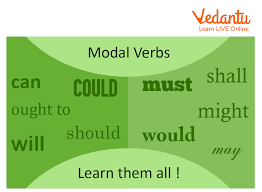Introduction
In the English language, modal verbs are versatile tools that convey a wide range of meanings and intentions. One fascinating aspect of modal verbs is their use in expressing deduction – the process of making educated guesses or drawing conclusions based on available information or evidence. In this blog post, we will unravel the world of deduction by exploring the five key modal verbs used to convey various degrees of certainty or likelihood when making inferences.
The Art of Deduction with Modal Verbs
Deduction, as a linguistic concept, involves expressing degrees of certainty or likelihood regarding a statement or situation. Modal verbs serve as our linguistic compass in this journey, helping us navigate the landscape of deduction. Here are the five modal verbs commonly used for this purpose:
1. Must
Usage: When you are very certain about something or when there is strong evidence to support your conclusion.
“The sun is setting, so it must be evening.”
“She has been studying all day; she must be exhausted.”
The modal “must” indicates a high degree of certainty, suggesting that the conclusion is highly likely to be true.
2. Might
Usage: When there is a possibility, but not a strong one, or when the evidence is weak.
“I heard a noise outside; it might be the neighbor’s cat.”
“He hasn’t replied yet; he might be in a meeting.”
“Might” implies a lower level of certainty, indicating that the conclusion is possible but not guaranteed.
3. Could
Usage: When there is a range of possibilities, and the evidence is quite uncertain.
“The recipe says it could take 30-40 minutes to bake.”
“He could be stuck in traffic; that’s why he’s late.”
“Could” suggests a wider range of potential outcomes, with limited certainty.
4. May
Usage: When there is a possibility, but it’s not very likely, or when the evidence is speculative.
“It may rain later, so bring an umbrella just in case.”
“She may have left her phone at home.”
“May” implies a lower likelihood compared to “might” and “must,” indicating a more speculative deduction.
5. Can’t
Usage: When you are very certain that something is not true or when there is strong evidence against it.
“I can’t find my keys anywhere; they must be in the car.”
“She can’t be 30 years old; she looks so young.”
“Can’t” expresses a high degree of certainty in the negative, indicating that the conclusion is highly unlikely to be true.
Read more information about What is a modal verb with example. .Click here.
Read –blogautoworld
Conclusion
The five modal verbs of deduction – must, might, could, may, and can’t – are valuable tools for expressing various degrees of certainty or likelihood when making inferences in English. By mastering the use of these modals, you can effectively convey your level of confidence in a statement or situation, allowing you to engage in clear and nuanced communication. Whether you’re discussing everyday scenarios, solving mysteries, or simply navigating the uncertainties of life, these modal verbs are your trusty companions in the world of deduction and inference.





